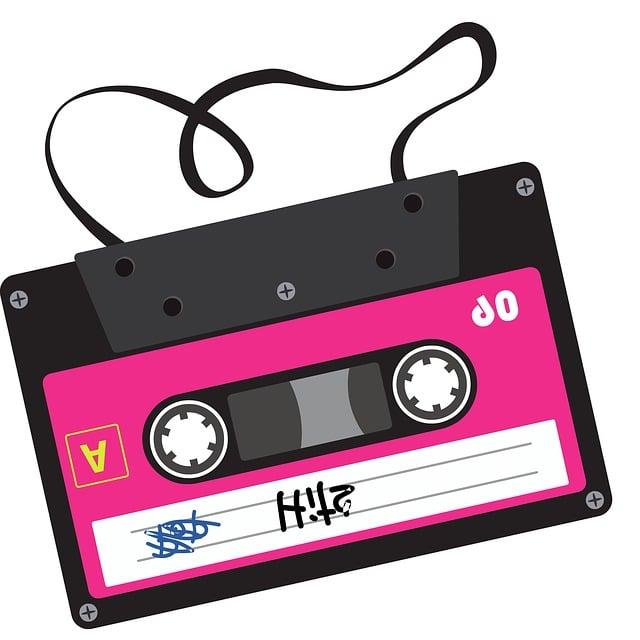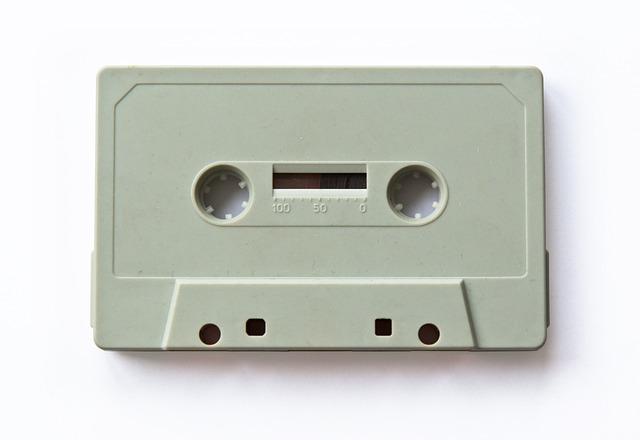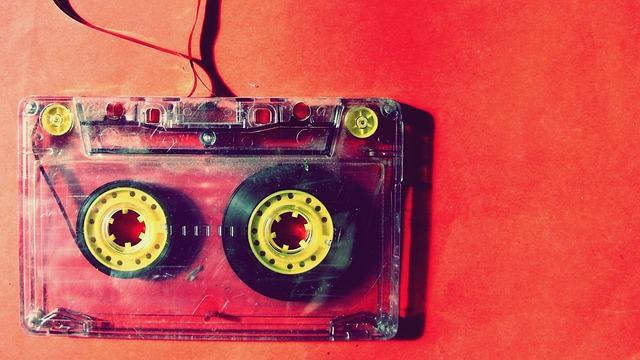In an age where digital dominates the music landscape, there’s a certain charm and nostalgia tied to the tactile experience of cassette recording. Imagine yourself in a dimly lit room, surrounded by dusty record sleeves and colorful tapes, as the warm crackle of analog fills the air. This guide is designed for those who crave a deeper connection to their music, offering a step-by-step approach to mastering the art of recording on cassette. Whether you’re a seasoned musician seeking to explore the retro vibes or a curious newcomer eager to dive into the world of analog, you’re in for a treat. Here, we’ll unravel the techniques, tips, and tricks that will transform your music-making experience, helping you bring your sonic visions to life in the most enchanting way possible. So, dust off that old tape deck, and let’s embark on this nostalgic journey together!
Understanding the Cassette Format and Its Unique Sonic Characteristics
The cassette format, popularized in the late 20th century, has a certain charm that still captivates audiophiles and casual listeners alike. Its unique sonic characteristics give it a warm, nostalgic quality that often feels more organic than today’s digital recordings. Unlike the crisp clarity of high-definition audio, cassettes introduce a bit of saturation and compression that many artists and listeners have come to love. This can lend a dreamy, lo-fi vibe that’s perfect for capturing raw emotions and spontaneous creativity. Many argue that imperfections, like a slight hiss or the subtle warble from the tape mechanism, contribute to a greater sense of depth and character in the sound. It’s like listening to a favorite old record—it’s never about perfection, but about the journey and the stories woven into the music.
When diving into the world of cassette recording, it’s essential to understand a few key attributes that define the format:
- Warmth: The analog nature of cassette tapes provides a natural compression that many find appealing.
- Dynamic Range: While cassette tapes have limited dynamic range compared to digital formats, this can actually enhance the emotional impact of a song.
- Coloration: The mechanical qualities of cassettes infuse recordings with a distinct personality that can vary between machines and tapes.
Here’s a quick comparison of common formats and their sonic characteristics:
| Format | Sonic Characteristic | Typical Use |
|---|---|---|
| Cassette | Warm, slightly compressed | Home recordings, demos |
| Vinyl | Rich, full-bodied | Collectible music, audiophile listening |
| Digital | Crisp, precise | Streaming, professional production |
Understanding these attributes is essential when you start making your own tapes. Embracing the distinctive essence of cassette tapes could be the key to unlocking a whole new layer of sonic creativity in your recordings!

Essential Equipment for a Successful Cassette Recording Setup
To dive into the nostalgic world of cassette recording, you’re going to need some key pieces of equipment to ensure your recordings sound professional yet retain that charming lo-fi vibe. Start with a high-quality cassette deck that allows you to input from various sources, like microphones or instruments. Look for one with features such as dual-capstan design for better tape handling and dbx noise reduction to keep unwanted hiss at bay. Pair it with a mixer to balance all your sounds; a compact analog mixer with sufficient inputs can give you the control to sculpt your mix just right without overcomplicating your setup.
Don’t forget to invest in some decent microphones for capturing those subtle details in your sound. Dynamic mics are great for instruments, while condenser mics can beautifully capture vocals. Also, you’ll need good quality blank cassettes; higher bias types tend to capture a wider frequency response and deliver a richer sound. For the finishing touches, consider cables and adapters of various lengths and types to suit your setup. Organizing these essentials in a sturdy carry case can make transporting gear a breeze. Here’s a quick table that outlines your equipment essentials:
| Equipment | Purpose |
|---|---|
| Cassette Deck | Record audio and playback tapes |
| Mixer | Blend and balance audio inputs |
| Microphones | Capture vocals and instruments |
| Blank Cassettes | Store your recordings |
| Cables & Adapters | Connect everything together |
| Carry Case | Organize and transport gear |

Techniques for Capturing the Perfect Sound on Cassette
When it comes to capturing your sound on cassette, it’s all about getting the nuances just right. One of the most critical techniques is to find the sweet spot for your microphone placement. If you’re recording vocals, try positioning the mic about six to twelve inches away—this distance tends to balance the warmth of the voice and the room’s ambiance. Don’t forget the importance of proper gain staging; keeping your levels in check can prevent distortion and loss of detail. Use the cassette deck’s built-in VU meters as your guide—aim for peaks around +3 dB for optimal clarity without clipping. This might feel like a dance at first, but trust me, it’s key to pulling out that rich, vibrant sound you’re after.
Another nifty trick is experimenting with different tape types. Each type brings its own flavor to the audio palette. For instance, using Type II (Chrome) tapes can enhance the high frequencies while Type IV (Metal) tapes tend to offer a more subdued sound, perfect for capturing those lush chords. Don’t overlook the pre-recorded tapes for their inherent warmth too! Lastly, consider the environment where you’re recording. Soft furnishings can absorb reflections, creating a hug-worthy sound, while hard surfaces might add unnecessary reverb. Each detail matters, so take your time to mess around with different setups—after all, part of the charm of cassette recording lies in its hands-on approach.

Embracing the Analog Aesthetic: Mixing and Enhancing Your Cassette Tracks
With the resurgence of cassette culture, there’s something utterly magical about the warmth and character those little tapes bring to your music. To truly embrace this analog aesthetic, consider how you can mix and enhance your cassette tracks to give them that authentic feel. Start by layering your sounds; think of each track as a part of a vibrant tapestry—each thread unique but contributing to a cohesive vision. Experiment with analog effects like reverb, delay, and compression to add that rich depth that digital recordings sometimes miss. Trust me, a little crackle and hiss can add personality to your tracks, transforming a simple melody into a vintage masterpiece that transports listeners back in time.
Don’t forget to play around with mixing levels—pushing your vocals slightly forward while letting the instrumentals breathe can create a mesmerizing blend. Want to add some personality? Try bouncing tracks between different cassette players; each machine has its quirks that may surprise you with delightful artifacts. Keep an eye on the frequency spectrum of each track to ensure clarity and impact. Here’s a handy table to consider while mixing:
| Sound Element | Mixing Tip |
|---|---|
| Vocals | Keep them prominent, add a touch of reverb for depth. |
| Guitars | Layer different takes for a fuller sound. |
| Drums | Gate the kick for punch, let snares breathe. |
| Synths | Experiment with panning to create space. |
By meticulously crafting your mix, you’re not just recording sound—you’re curating an experience. It’s like painting with audio; every decision affects the final piece. So roll up those sleeves, grab your cassettes, and let the analog vibes flow!

The Conclusion
As we wrap up our journey through the vintage yet vibrant world of cassette recording, it’s clear that mastering the mix on this classic format is more than just a technical endeavor—it’s an art form. Much like the warm sound of a well-loved vinyl, the charm of cassettes lies in their imperfections and the tactile experience they offer. So, whether you’re a seasoned musician looking to reconnect with your roots or a curious newcomer eager to explore this retro realm, remember that each tape you record carries your unique sound and story.
In a world flooded with digital noise, there’s something magical about pressing that play button and letting the soft whir of the tape transport you back to a simpler time. So, grab your gear, dust off those old cassette decks, and start experimenting! Remember, every great mix begins with that first note. Whether your recordings are polished or a bit rough around the edges, it’s your creativity and passion that will shine through. Keep creating, keep experimenting, and who knows? You might just find that cassette recording becomes your new favorite sonic playground. Happy recording!



